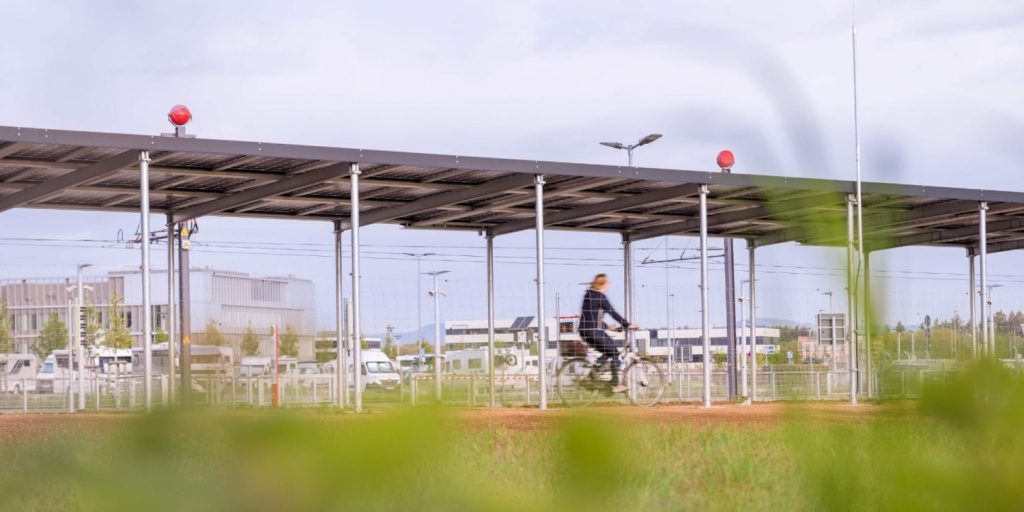Europe’s first solar-covered cycling path has recently debuted in Freiburg, a picturesque city located in the heart of the Black Forest. This innovative project, a collaboration between German utility service provider Badenova, the City of Freiburg, and the renowned Fraunhofer Institute for Solar Energy Systems, has garnered significant attention for its groundbreaking approach to sustainable infrastructure.
The 300-meter-long (984-foot-long) cycling path, conveniently situated near the Freiburg FC football stadium, boasts an impressive solar roof composed of 900 translucent solar modules manufactured by the esteemed German panel maker, Solarwatt. To ensure optimal stability and efficiency, Freiburg-based Clickcon played a crucial role by providing the mounting structures that securely hold the solar modules in place.
See also: Stanley Black & Decker Launches Kentucky’s Largest Privately Funded Onsite Solar Farm
A noteworthy highlight of this solar-covered cycling path is its capacity to generate a staggering 280 megawatt-hours (MWh) of clean energy annually. This considerable energy output will primarily be utilized by the various laboratories at the Fraunhofer Institute, underscoring their commitment to sustainable practices. According to Badenova’s recent announcement, the cycle path’s solar roof is expected to be operational within the next few weeks, ushering in a new era of eco-friendly transportation and power generation in Freiburg.
Dr. Karolina Baltins, the esteemed head of the PV power plants team at the Fraunhofer Institute, expressed her enthusiasm for the project, stating, “We not only harness the solar power generated by the cycle path’s canopy, but we also leverage the invaluable knowledge and insights gained from this pilot initiative to further our research and address the diverse challenges associated with implementing photovoltaics in urban areas.”
Undoubtedly, this solar-covered cycling path in Freiburg represents a true win-win scenario. Cyclists can now enjoy a sheltered and protected journey, shielded from the whims of weather, while simultaneously contributing to a sustainable future. By harnessing the power of the sun, this trail blazes a path toward a cleaner and greener world, setting an inspiring example for cities across the globe. Indeed, this pioneering pilot project is deserving of emulation far and wide.

